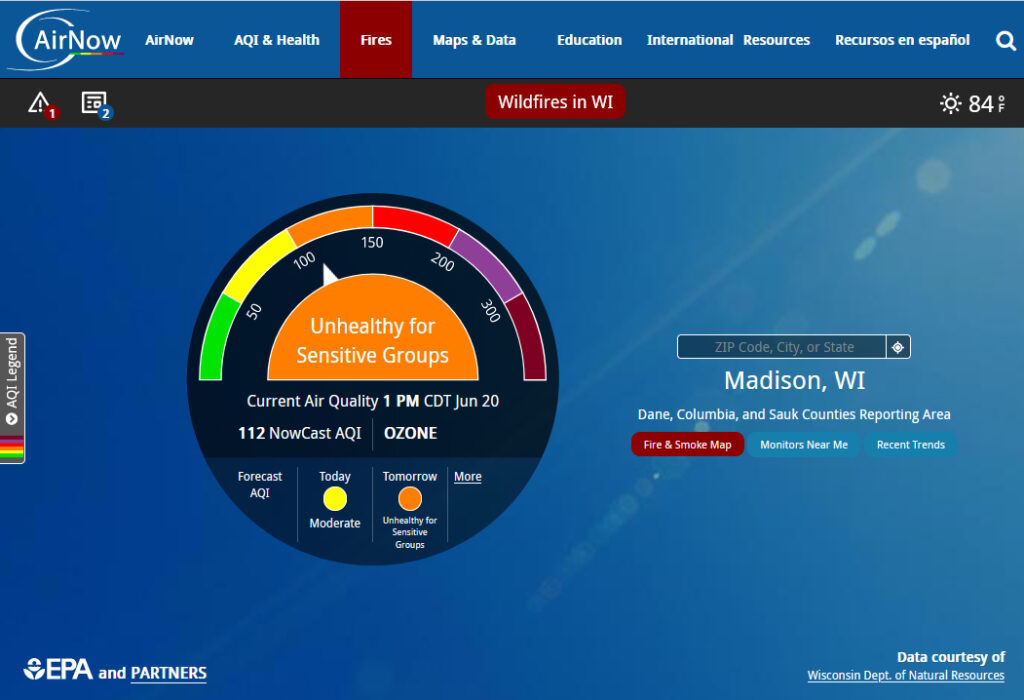Ozone (O3) is a molecule formed by three oxygen atoms.
Ozone that resides in the stratosphere absorbs ultraviolet rays of the sun, protecting life on Earth’s surface from these high-energy electromagnetic waves. O3 also can occur near the ground, where it is considered a pollutant, as it is a chemically reactive gas that can cause respiratory problems when breathed.
O3 near the ground is created when oxides of nitrogen chemically react with volatile organic compounds. Typically, ground level O3 has highest concentrations in mid-summer with hot weather, minimal amounts of cloud cover and light winds. In Wisconsin, O3 is highest near Lake Michigan due to transport from the Chicago area as well as chemistry occurring over the lake. But triggers such as the chemicals found in forest fire smoke can result in high concentrations of O3 outside that typical time period.
Because O3 can be a health hazard, there are air quality standards set to protect public health. Public warnings are issued whenever these thresholds are approached or exceeded. The Clean Air Act requires the Environment Protection Agency to periodically review all the National Ambient Air Quality Standards to ensure that they provide adequate health protection. The current standard for O3 is 70 parts per million.

The EPA uses an Air Quality Index (AQI) for reporting air quality so that risks can easily be interpreted. The AQI is divided into six categories corresponding to different levels of health concern. Each category also has a specific color to enable the public to quickly determine air quality in their community: green is good air quality, yellow moderate, orange unhealthy for sensitive groups, and red is unhealthy.
During the past three years, there have been more early-season ozone alerts in April and May, in part due to hotter temperatures earlier in the season, and in part this year due to the transport of wildfire smoke from Canada to Wisconsin.
Steve Ackerman and Jonathan Martin, professors in the UW-Madison department of atmospheric and oceanic sciences, are guests on WHA radio (970 AM) at 11:45 a.m. the last Monday of each month. Send them your questions at stevea@ssec.wisc. edu or jemarti1@wisc.edu.

